Fintech rewind, listen, and fast forward
How tech evolution has brought banking and compliance to today’s crossroads
- |
- Written by Thomas Grundy
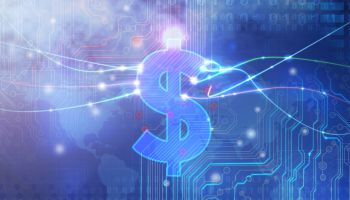 Did you ever own a Walkman? In the space of not very many years, technology in general and financial technology in particular have taken huge leaps. To set the context for a look at today's leading technologies and a risk-focused way of looking at the future, Wolters Kluwer's Tom Grundy takes you on a tech-oriented walk through recent decades.
Did you ever own a Walkman? In the space of not very many years, technology in general and financial technology in particular have taken huge leaps. To set the context for a look at today's leading technologies and a risk-focused way of looking at the future, Wolters Kluwer's Tom Grundy takes you on a tech-oriented walk through recent decades.
In a recent discussion, I was reflecting on my life and the changes I have witnessed, and how quickly time passes. When you pause to think back to particular moments in your life—where you were, your stage of life and career—the thing that often stands out is the technology of the time. It’s interesting how we tend to associate stages of life with advances in and personal adoption of new technologies. It’s also fascinating to consider all of the new fintech innovations that are now an accepted part of our day-to-day existence.
In the spring of 1985 I joined the Office of the Comptroller of the Currency and came into the agency at the point of transition from typewriters to computers. These 42-pound “portable” computers with their dual floppy drives and small “green screen” monochrome monitors were transformative to the mobile OCC work force.
On a personal level, I rewarded myself later that year with the purchase of my first AM/FM cassette Sony Walkman. It completely upgraded my daily run and workout routine, and seriously, Duran Duran could not have sounded better!
It was quite a year—starting my career with a portable computer heavy enough to put me in traction and a portable music device that was basically a glorified transistor radio. Both the computer and the Walkman were must-have products during the mid-eighties, yet I’m sure somewhere in the annals of the National Museum of American History, these artifacts will be on display.
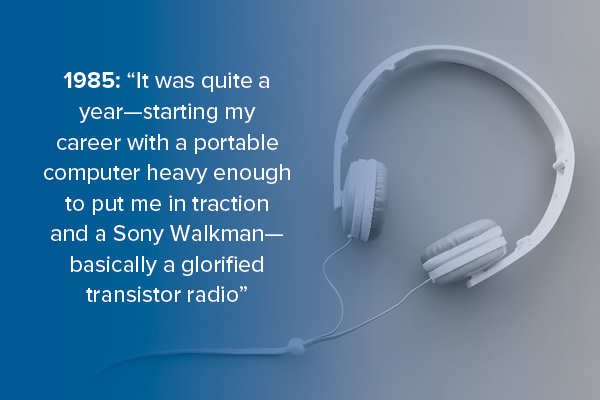
Today, like so many people, I have the closet—you know what I’m talking about—the closet of outdated and discarded electronics and technology. My personal collection of old cell phones, former desktop computers and laptops, and maybe even a VCR buried somewhere in the back.
1997: Caught in the Web
Let’s take a moment and think back to 1997… Amazon and eBay have only been in business for three to four years and Google has yet to be founded.
For the nostalgic, remember the early search engines… AltaVista? Lycos?
And, of course, the marketing slogan we all had to answer to… “Do You Yahoo?”
I still remember the edgy excitement of the screeching sounds of dialup and hearing “You’ve got mail” coming through my desktop speakers.
It was in the early fall of 1997 that I got the call.
I was working for the Federal Reserve Board. Every day was a suit-and-tie routine working among the masses in Washington. My perspective would change dramatically due to that call from a California company. They were seeking a compliance professional with first-hand regulatory experience to join their engineering team to build the first fully licensed, internet-based mortgage broker.
It seemed completely outrageous for me to walk away from a secure, government job in Washington to pursue some high-tech fantasy on the opposite side of the country. However, after numerous interviews and trips to San Diego, I ditched the suit and tie for jeans and a t-shirt and headed for a new life in sunny Southern California.
All at once I found myself immersed in a new mindset of challenging the status quo.
I recall frequent business trips to corporate headquarters in the Bay Area, driving past the endless startups in little buildings along the way—every mundane thing you could imagine in life during the late nineties was something common yet reinvented with the appendage of “.com” added.
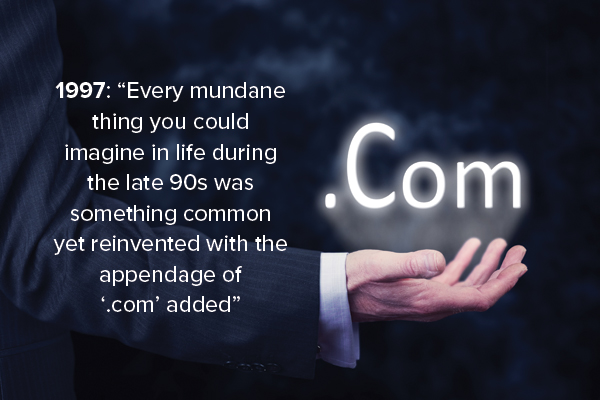
Indeed, the institutional walls of retail consumerism were coming down! It was a time of technological wonder and early-stage chaos. We thought we had advanced so far, yet the “e-volution” was only just beginning.
1998 to 2017: Disruption and Democratization
Reflecting on the major tech stories making headlines in 1998, certainly not the least of these was the founding of Google. Moreover, it was during 1998 that many banks throughout the United States established their first generation transactional websites, giving consumers their first experience with virtual banking.
The world was also introduced to a new payment processing platform to support our burgeoning online shopping appetite—enter PayPal in December 1998.
The shift to a virtual lifestyle would only continue to gain momentum. Confirming this new reality, the Pew Foundation reported in 2000 that 70% of young adults between 18 and 29 used the Internet.1
Other indications that we were on a path to increased internet activity and reliance on technology in our everyday lives played out in the form of major alliances. One such Goliath example was Cisco and IBM announcing a technology, networking, and strategic services alliance that promised to drive the development of solutions for e-business and networking.
This would drive the transformation of traditional business models into internet-based providers of everyday goods and services. By 2001, 19 million households were actively online and accessing bank account information through the Internet.2
As the decade moved on, the “Web 2.0” movement materialized as the caption for a new generation of applications—blogs, wikis, video sharing services, and social media websites such as Facebook and MySpace.
Interactive sharing and participatory collaboration was rapidly changing how people met, shared information, and socially interacted. Web 2.0 would support an increasingly digitized world for consumers and businesses alike.
Washington noted the technology shift and its impact on financial services. In September 2003, the Federal Financial Institutions Examination Council issued revised guidance for examiners, financial institutions and technology service providers on electronic banking.
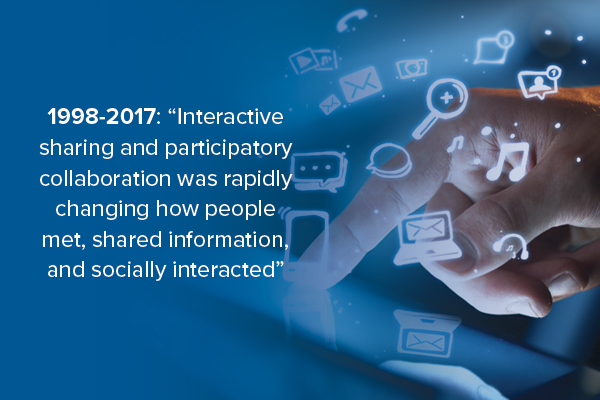
This FFIEC guidance recognized that e-banking created new opportunities for delivering traditional products and services to customers, as well as the “potential to offer new products and services.”3
With the founding of Facebook in February 2004 came a seismic movement in how people would incorporate the Internet into everyday life. Broadband outpaced dial-up connections, confirming the consumer appetite for high-speed connectivity to support increased online activity.4
The pace of investment and developments to this point, along with the consumer trends in Internet usage, suggested that the Internet was firmly taking root in society—and showing signs of continued e-volution.
The Web 2.0 years brought a serious creative challenge to conventional thinking. Fintech was rapidly emerging, staking its claim to a market that mainstream banking and financial services were not fully reaching.
From 2005 until 2009, a bevy of online consumer lenders, crowdfunding, robo-advisors, bitcoin, and payments processing providers were launched in a world that was sinking into financial chaos and crisis and seeking a way forward.
Anticipating the Millennial market potential, many of these products and services not only survived but have thrived as formidable players in the increasingly diverse financial services landscape.
As a member of the Baby Boom generation, I find that I have to work to remember the quirky and obscure names of these various enterprises. Yet as I migrate more and more to my own virtual consumer reality, I find with usage comes familiarity.
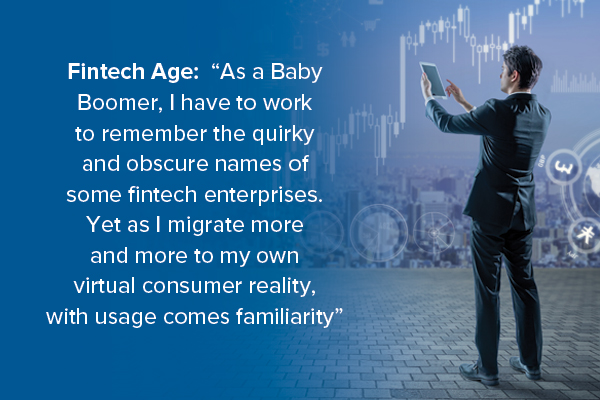
Looking around today
Understanding these Web 2.0 “next-gen” fintech products and service offerings provides a view to the future of consumer markets for financial services.
At first blush, some of these next-gen products may have seemed overly imaginative. However, most are now recognized by digital consumers as the go-to providers of consumer loans, investment information, small business capital, and money movement and remittance services. As hinted earlier, let’s take a closer look at some of the fintech innovations that are now part of day-to-day life.
Peer-to-peer lending
Peer-to-peer (“P2P”) lending or, as it is sometimes referred to, “marketplace” or “social” lending, offers a financing option that enables individuals to lend and borrow money with minimal, or no human interaction, and it removes the financial institution intermediary from the equation.
Today’s P2P lending model provides an opportunity for lenders to generate a higher return on their funds than can be earned through traditional savings and investment. It also offers borrower access to financing that may not otherwise be possible due to having little or no credit history or past credit problems.
P2P lenders employ technology to create a simple, fast application and credit decision process. From a compliance standpoint, P2P lenders are subject to consumer protection laws and regulations through direct supervision by CFPB or indirectly through a relationship with a regulated financial institution.
While the concept of P2P is based on individuals funding credit, there are agreements and partnerships in place with major financial institutions that vary. Typically, these arrangements involve leads and referrals, loan purchases, and operational cash injections.
Crowdfunding
The name may be a relatively new term in our collective financial vernacular; however, the concept is an old idea. Implicit in the name, crowdfunding is the pooling of funds from a large group of people to help fund an idea or cause.
This approach to generating capital can fund a small start-up or help a person in their time of need. As such, crowdfunding spans a wide spectrum that can range from equity investment to philanthropic activities. While regulatory oversight of this area is challenging, the potential for fraud and abuse is high and will necessitate closer scrutiny.
Robo-advisors
At first blush, the term “robo-advisor” can be off-putting. Yet upon closer examination of the concept, it is clear this has nothing to do with rapid document signing or excessive, automated phone calling processes.
Simply, a robo-advisor is an online, automated portfolio management service using computer algorithms to manage client investments. These virtual financial advisors are minimizing the needed involvement of human financial advisors.5
This fintech development speaks directly to the millennial mindset of trusting technology, rather than the institution or the humans who represent it. However, traditional institutions in the wealth advisory space have been quick on the uptake to adopt and adapt to the robo-advisor movement.
Digital wallet
If you are like me, I have had a life-long struggle with keeping my leather-worn wallet under control. But with credit cards, driver’s license, insurance information, customer loyalty cards, not mention cash, business cards and assorted other items—my outdated rawhide wallet has quite literally served as a portable file cabinet!
Enter the digital wallet. PayPal introduced this concept, and technology companies ever since have been continually competing to refine and home in on the ultimate solution. Essentially, digital wallets provide a system for storing payment information and passwords for numerous payment methods, enabling users to complete purchases easily and quickly without presenting cash or a physical debit or credit card.
Digital wallets are used in conjunction with mobile payment systems and, increasingly, consumers are transacting and paying for purchases with their smart phones. This technology has been adopted by banks and is widely available for consumers looking to get rid of their old-school leather wallet or pocketbook and pay for purchases with the touch of their mobile device via solutions available through Apple, Android, Samsung, or Microsoft Wallet.
Bitcoin
Bitcoin or “crypto-currency” is an electronic, digital currency created in 2009. The digital currency market comprises nearly 800 distinct electronic currencies spanning a broad range of unit pricing and supply.
Bitcoin transactions are conducted anonymously—without third-party support—meaning little to no bank involvement. Bitcoin offers the promise of low or no transaction fees, unlike traditional online payment mechanisms, and it is decentralized, unlike government issued, legally recognized fiat currency, i.e. currency established as money by government regulation or law.
For the true geeks among us, bitcoin balances are kept using public and private “keys” which are long strings of numbers and letters linked through mathematical encryption algorithms used to create them.
The public key (comparable to a bank account number) serves as the address that is published to the world and to which others may send bitcoin.
The private key (comparable to an ATM PIN) is meant to be a guarded secret, and only used to authorize bitcoin transmissions.6
Bitcoins can be acquired through marketplaces or exchanges and for some represent an investment vehicle through buying and holding units on speculation that they will increase in value. Once acquired, bitcoins are stored in a digital wallet setup to allow the user to send and receive bitcoins very much as you would use a traditional bank account, only without the benefit of FDIC insurance.
In the U.S., electronic currencies are controversial, in that they have been used to anonymously transfer illicit funds or hide unreported income from the Internal Revenue Service. Bitcoin policy has been emerging and now requires conversion transactions that involve traditional, government-backed currencies to be attached to an identity.
IRS has ruled that bitcoin is to be treated as property for tax purposes, making bitcoin subject to capital gains tax. The Financial Crimes Enforcement Network has issued guidelines for cryptocurrencies, warning that anyone creating and exchanging bitcoin for fiat currency, under certain circumstances, may be engaged in money transmission activities and subject to the requirements of the Bank Secrecy Act.
FinCEN states that “[a]ny transfers to third parties at the behest of sellers, creditors, owners, or counterparties involved in these transactions should be closely scrutinized, as they may constitute money transmission.”7
Nonetheless, bitcoin is gaining acceptance. Japan recently announced that bitcoin has become recognized as a legal payment method, effective April 2017.
Speculating on the impact of bitcoin and the role it will play in the world economy is an open question. The legitimacy of bitcoin can only come through acceptance—and acceptance takes time.8
However, prominent retailers are stepping up and accepting bitcoin. Such widely recognized brands as Apple, Microsoft, Dell, Amazon, Overstock.com, Target, CVS, and Home Depot, among others, are on board with bitcoin.9
From a global perspective, bitcoin has the potential for easing the burden and costs of transactions and payments in the developing world as a matter of practicality and survival, especially in areas where traditional banking services are limited or non-existent. Bitcoin has the potential to serve as a global currency that can change hands without the support of intermediaries or third party financial institutions.
Payments
The impact fintech is having on payments and remittance is reshaping processes and technology infrastructures on many levels.
Supporting transactions with the speed and ease to meet the real-time demands and expectations of global businesses and mobile consumers is the gold standard to which many fintech firms aspire.
From a consumer perspective, fintech is having a direct impact on reducing the cost of moving money. From a corporate point of view, significant enhancements in speed, transparency, predictability of fees, and rich data transfer are being realized.
On a global scale, cross-border payments are the focus of the Global Payments Innovation (GPI) initiative undertaken by the Society for Worldwide Interbank Financial Telecommunication (SWIFT). Over 60 major banks world-wide endorse this initiative.10
Technology is making possible same-day use of funds, greater transparency for end-to-end tracking of payments, and improved fraud detection and pattern recognition capabilities.11 SWIFT announced earlier this year that it is exploring blockchain (defined below) as part of the GPI to further efforts to improve data controls and access standards.12
Furthermore, there are different strategies rapidly driving developments in area of payments through financial institutions buying solutions, forming partnerships, investing in fintechs and, most notably, joining and working through networks.
An example of this—and one that is considered a game-changer—is Zelle’s current collaboration with 19 large banks, four payment processors, and two card networks to create a secure, easy-to-use platform for peer-to-peer payments.
Blockchain
Starting from the standpoint of basic definitions, blockchain is a public, shared, distributed digital ledger.
Huh? If you have not been following the emergence of digital currencies, the concept of blockchain may take some getting used to. At its core, blockchain allows digital information to be distributed but not copied and came into existence with the development of bitcoin.13
Since 2009, blockchain has been the record of all bitcoin transactions. The blockchain is constantly increasing with the addition of newly completed “blocks.” The blocks are added to the blockchain in a linear, chronological order. Distributed ledger, in essence, is a database that is “consensually shared and synchronized across network spread across multiple sites, institutions or geographies.”14
Blockchain is an encrypted record of transactions and agreements supposedly making it a secure, finalized record. However, for the information privacy and security skeptics among us, this may be cause for long-term discomfort given the far-reaching potential applications for this technology.
Blockchain has been catching a wider span of attention across industries. Increasingly, a growing number of companies are experimenting with distributed ledger technology as a trusted way to track the ownership of assets without the need for a central authority. This technology is speeding up transactions and cutting costs. At this stage, blockchain is in the experimental phase, but acceptance is rapidly expanding.
Data sharing and aggregation
Of recent there has been considerable press around banks sharing data with fintechs. Call it product and service e-volution, but the real driver behind banks and fintechs joining forces is to optimize the consumer experience. Sounds good, right?
But still, what exactly is going on here, and what are the pitfalls that need to be understood and managed? Should consumers be concerned that their access credentials and personal financial information is being scraped without their knowledge or consent?
Growing pains are inevitable as the technology progresses, and competitive pressures are driving partnerships between traditional financial institutions and technology solution providers.
Perhaps the best example illustrating this is the agreement by two major U.S. banking companies in early 2017 to enter into a data sharing agreement with Intuit. Intuit plans to use data aggregation to power its services including Quickbooks, an accounting solution for small- and medium-sized businesses and Mint.com, a personal financial management application.
Bank customers will be able to share their account data with Intuit’s services through the bank’s open application programming interface—without manually entering online banking details.
Besides Intuit, Finicity and Xero are other examples of technology companies working closely with major banks to establish data sharing partnerships to create an enhanced experience for bank customers. Banks are leveraging third-party technology products in an effort to expand their product and service offerings at lower cost than attempting to build these solutions in-house.15
This shift is occurring even in the face of potential risks to bank brands, concerns around data privacy and security associated with screen scraping, and the added load on servers during peak service hours. Nonetheless, reaching technology-oriented customers who are expecting more and willing to look elsewhere are driving this trend toward making the risk worth taking.
Big Data, machine learning, and artificial intelligence
Big data is the accumulated byproduct of the massive amount of data generated over time by the proliferation of the internet, smartphones, email, texting, social media, data streaming, search engines, global positioning, and computer logs. Concurrently, the data sciences have evolved through the creation of complex algorithms serving as the foundation for machine learning. No longer is data processing simply data processing: data is knowledge; data is power. We now live in a world that functions, quite literally, through artificial intelligence.
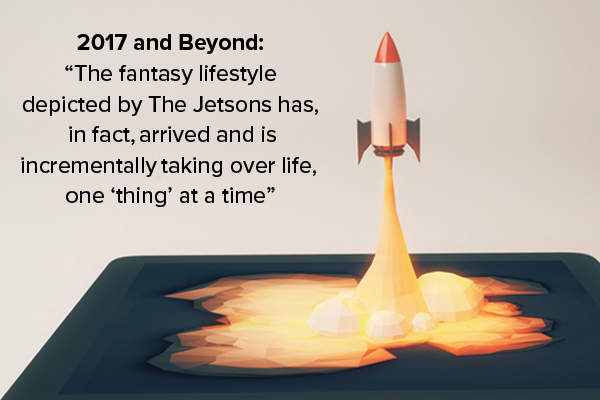
For financial institutions, big data presents tremendous opportunities. Leveraging machine learning to produce personalized products and services is driving institutions to compete unlike never before. Big data and artificial intelligence will enable banks and financial services companies to identify customer segments based on such factors as demographics, transactional behaviors, interactions with branches, online banking and telephone customer service platforms, and responses to customer surveys, helping facilitate the development of more immediate and tailored services.
Another applied advancement will be in the area of risk management and fraud detection. The ability to establish risk profiles on a customer-specific level will be further enhanced based on both stated and known factors, and enhanced through behavioral analysis. Proactively identifying patterns in data and discerning fraudulent activity from normal customer activity is an ongoing challenge for financial institutions, and it can require a significant investment in technology and human resources. Advancements in artificial intelligence are making possible efficient, real-time identification and response to fraudulent activity.
2017 and Beyond: Success through Technology
As I fondly reflect on that Sony Walkman, I’m astonished as I now listen to digitized music streaming via the internet through wireless Bluetooth headphones. Crazy, huh?
We are now seeing self-driving vehicles in use, navigating through crowded city streets with the aid of big data and artificial intelligence; biometrics now validate identities; and major retailers are accepting digital currencies. We have arrived at the “Internet of Things” meaning that any device—cars, refrigerators, washing machines, televisions, headphones, home lighting, road and bridge condition sensors, you name it—all connect to the Internet.16 It seems that the fantasy lifestyle depicted by "The Jetsons" has, in fact, arrived and is incrementally taking over life, one “thing” at a time.
From a federal regulatory perspective, the OCC recently has taken two major steps with the creation of its Office of Responsible Innovation, as well with its December 2016 announcement that it would consider applications from financial technology companies to become special purpose national banks.17
Meanwhile, FDIC, CFPB and individual states are closely monitoring fintech developments with an eye to ensuring that consumers’ interests are being protected, and that the safety and soundness of financial institutions is not at risk. In the case of the states, state banking regulators have joined together and filed a lawsuit seeking to block the OCC, arguing that the agency does not have the authority to issue special fintech charters. The lawsuit expresses the concern that the special charter would allow fintech firms to evade state-level consumer protections and potentially harm consumers. It should be no surprise that jurisdictional conflicts are arising from this move by the OCC.
Ready or not, the future is here, and the fight is on as we all progress toward a more refined technological state.
For competitive financial institutions, innovation and an unwavering focus on the customer experience are non-negotiable in today’s marketplace. Establishing a competitive footing in this environment presents serious questions for how to proceed. Traditional financial institutions are increasingly forming partnerships with fintech firms to offer value-added products and services that tech-oriented consumers expect. Alternatively, buying technology solutions or investing in early-stage fintech and bringing the solution in-house, or building innovations from scratch are possibilities, but costly and time-intensive. While partnerships with fintech firms are more of a turnkey solution, the third-party risk is real and must be managed. Fintech partnerships and networks come with the usual third-party risks and obligations, in addition to risks unique to fintech. Depending on the degree of the inter-relationship, consumer-facing interactions and access to the financial institution’s data all present substantial challenges.
Considering fintech partnerships
Thoughtful due diligence when forming a fintech partnership should involve careful consideration of the following:
1. Does the fintech management team include an experienced compliance officer?
2. Have they established an effective compliance management system?
3. To what extent have they catalogued their risks and controls?
4. Is there a risk framework to support complex compliance and regulatory reporting requirements?
5. Do they have proactive complaint management, UDAAP, and fair-lending programs in place?
6. Are there contractual protections if regulators require remediation, and can they afford to implement required changes?
7. What level of access will financial institutions have for conducting ongoing compliance monitoring?
8. What agreements or limitations should a financial institution avoid in cases of intellectual property precluding access and transparency to investigate the root cause of an issue, violation, process failure, or consumer complaint?
Each of the above points is a serious matter, and each product, service and potential partnership will present unique risks for consideration. There are no guarantees.
Reflecting on the technology timeline of the past 20 years, and realizing where we are today, is breathtaking. I think we all can agree that the future is upon us. However, the debate around risk versus reward for those willing to take the plunge and support the “e-volution” rages on.
The rewards could be great, but caution is advised.
Footnotes
1 Americans’ Internet Access: 2000-2015, Pew Research Center, June 26, 2015
2 Online Banking Report, January 2012
3 Federal Financial Institutions Examination Council
4 "Broadband overtaking dial-up in major cities," Jim Hu, C|Net, March 10, 2004
8 “Star Silicon Valley entrepreneur: Here’s why bitcoin will be bigger than the internet,” Business Insider, February 11, 2015, Nicholas Carlson
9 "How To Use Bitcoin To Shop At Amazon, Home Depot, CVS And More," Forbes, February 17, 2014, Clare O’Connor
13 “Is blockchain technology the new internet?,” Blockgeeks
14 Investopedia
15 “Here’s why US banks are sharing data with fintechs” Business Insider, February 7, 2017
16 “A Simple Explanation of ‘The Internet of Things’,” Jacob Morgan, Forbes, May 13, 2014
Tagged under Management, Compliance, Compliance Management, Feature, Feature3,














